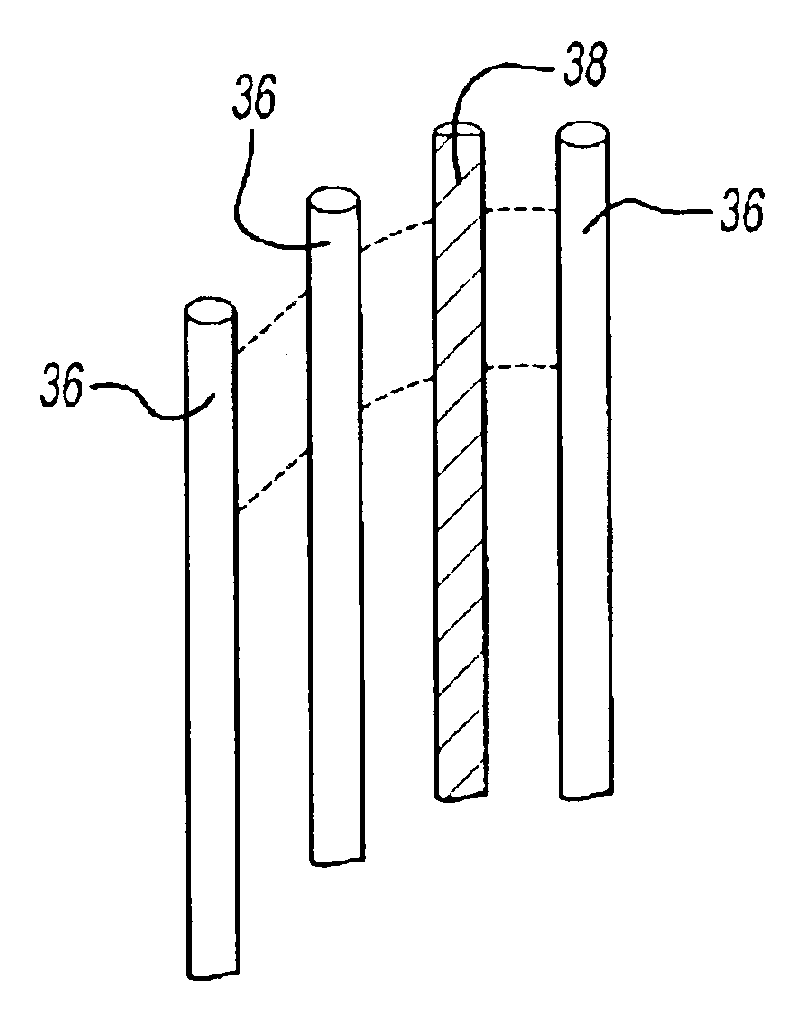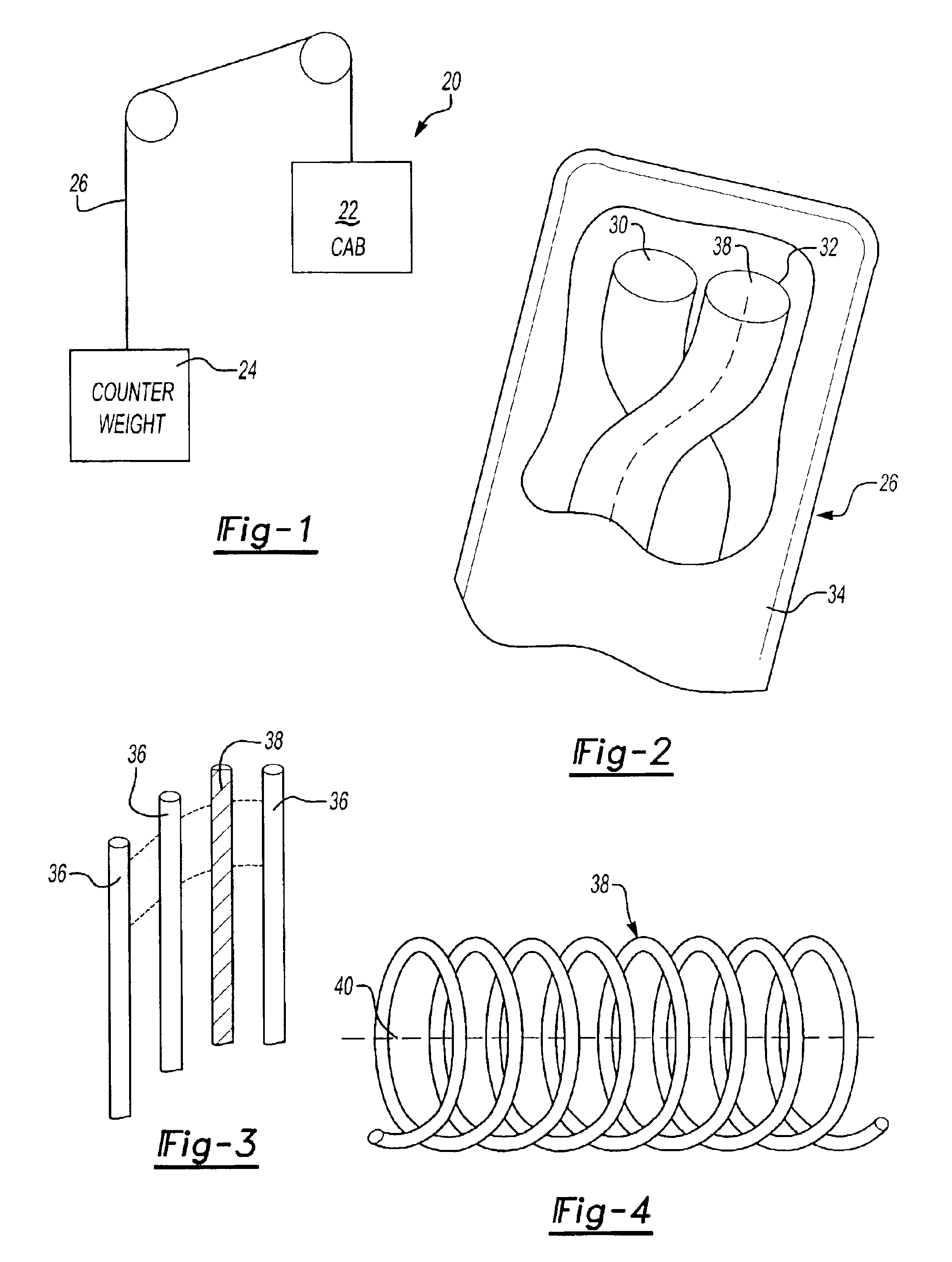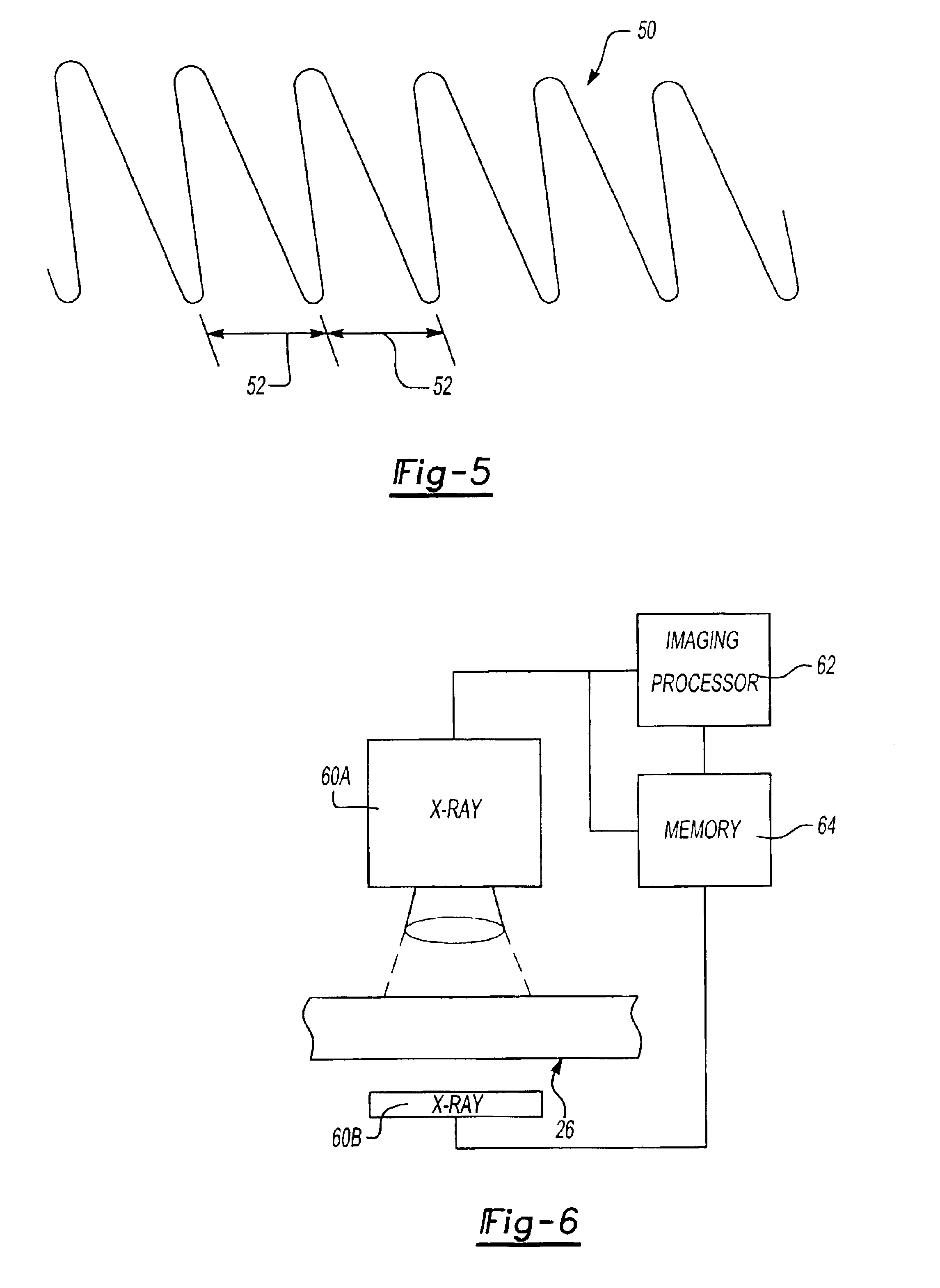Elevator load bearing assembly having a detectable element that is indicative of local strain
a technology of load bearings and assemblies, applied in the direction of elevators, instruments, force/torque/work measurement apparatus, etc., can solve the problems of limited inspection methods, no indication of exterior portions of ropes, and no indication of local strain
- Summary
- Abstract
- Description
- Claims
- Application Information
AI Technical Summary
Problems solved by technology
Method used
Image
Examples
Embodiment Construction
[0018]FIG. 1 schematically shows an exemplary elevator system 20 that includes a cab 22 and a counterweight 24. A load bearing member assembly 26 couples the cab 22 and counterweight 24 together so that the cab 22 can be moved between landings in a building, for example, in a conventional fashion.
[0019]The load bearing member assembly 26 may take a variety of forms. One example is a flat belt containing polymer reinforced strands. Other examples include flat, coated steel belts; synthetic ropes; and multi-element ropes. This invention is not limited to “belts” in the strictest sense. A flat belt is used as one example of a load bearing member designed according to this invention. Therefore, any reference to a “belt” within this description is not intended to be limiting in any sense.
[0020]The example load bearing member assembly 26 shown in FIG. 2 includes a plurality of strands 30 and 32 that are wound together in a known manner to form at least one cord. A first material preferabl...
PUM
 Login to View More
Login to View More Abstract
Description
Claims
Application Information
 Login to View More
Login to View More - R&D
- Intellectual Property
- Life Sciences
- Materials
- Tech Scout
- Unparalleled Data Quality
- Higher Quality Content
- 60% Fewer Hallucinations
Browse by: Latest US Patents, China's latest patents, Technical Efficacy Thesaurus, Application Domain, Technology Topic, Popular Technical Reports.
© 2025 PatSnap. All rights reserved.Legal|Privacy policy|Modern Slavery Act Transparency Statement|Sitemap|About US| Contact US: help@patsnap.com



